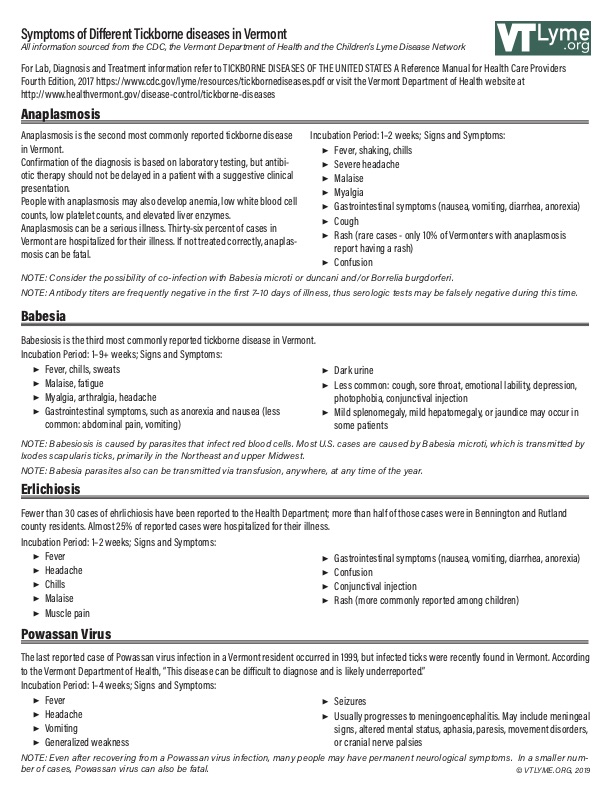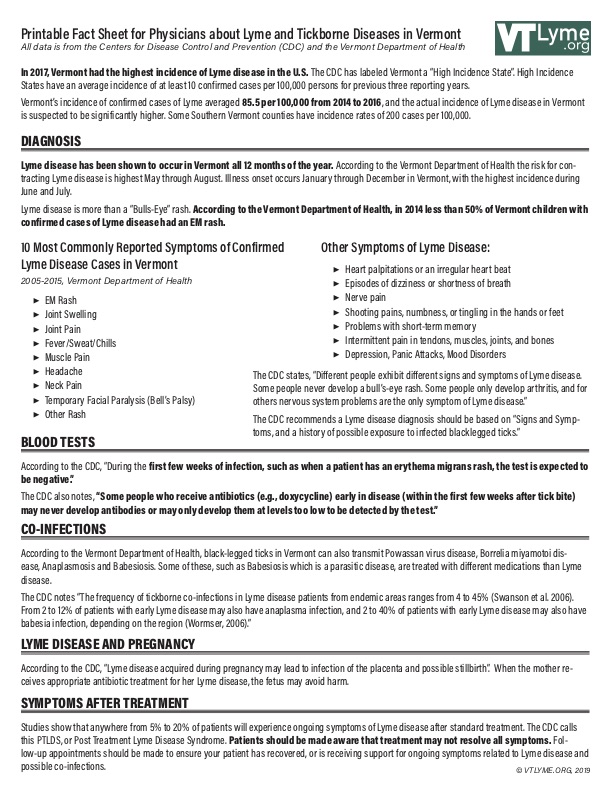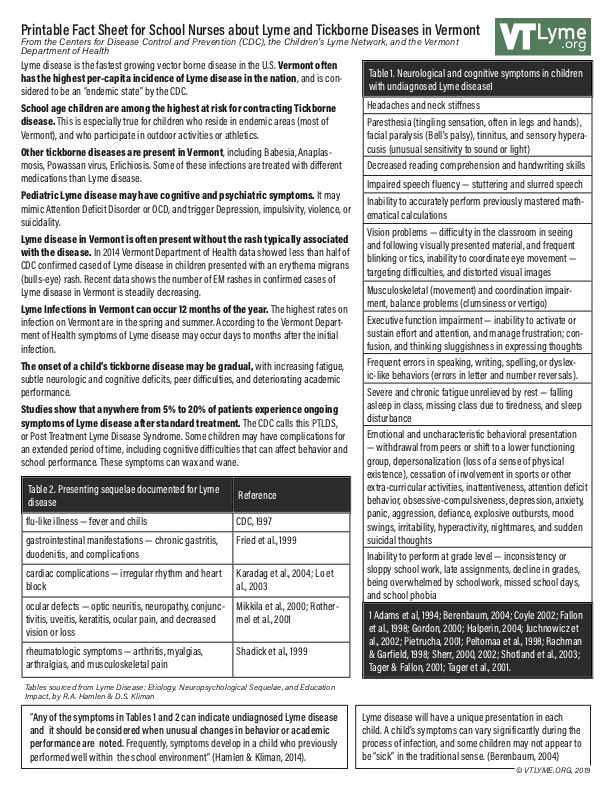
Medical professionals in Vermont approach the diagnosis and treatment of Lyme disease in different ways. Some believe a CDC positive blood test, or an EM rash, must be present to diagnose Lyme disease. Others understand that symptoms may present without a rash, and the timing of Lyme blood tests, or use of prophylactic antibiotics, can affect test outcomes. The IDSA (Infectious Disease Society of America) says “Lyme disease is diagnosed by medical history, physical exam, and sometimes a blood test.”
It is also important for providers to consider other tickborne diseases. Anaplasmosis, Powassan Virus (rare), Erlichiosis, and other tickborne pathogens have been found in ticks in Vermont. Vermonters who remain ill after treatment for Lyme disease may have infections such as Babesia or Bartonella that require different treatment. A patient can also have a tickborne infection without having Lyme disease.
Early diagnosis and treatment is important to preventing long-term problems or poorer health outcomes. Lyme disease may present in a traditional way, with joint pain, fevers, and a “Bulls-Eye” rash. Tickborne diseases can also present as emotional difficulties, memory loss, vision problems, or extreme tiredness – without the presence of joint pain or rash. In children, a tickborne disease may mimic ADHD or learning disabilities.
Some practitioners think of Lyme as a simple infection easily cured by a short course of antibiotics. Others have patients who experienced Lyme as a complex disease that requires comprehensive treatment. This dissonance may be because early stage Lyme disease often has excellent treatment outcomes, while there is little research on treatment outcomes of late stage, disseminated Lyme disease.
Blood Tests
A positive Lyme test does not always mean someone has active Lyme disease. It may mean that a person was infected in the past and the body produced antibodies that successfully eliminated the Bb bacteria. Also, some viral illnesses or other infections can trigger the body to make antibodies against Lyme – even in the absence of a current Lyme infection.
A negative test does not always rule out Lyme disease, especially if a patient has symptoms. According to the CDC, testing for Lyme disease too early will result in a negative test, even if the person is infected. Prescribing prophylactic antibiotics for a tick bite is based on limited research, and can also result in a person with Lyme disease testing negative. There are also other tickborne diseases in Vermont that will not appear when testing for Lyme disease.
Misdiagnosis
Patients with tickborne illnesses have been misdiagnosed with diseases including mood and anxiety disorders, heart problems, Lupus, Fibromyalgia, Chronic fatigue syndrome, Arthritis, and more. It is also possible for a patient with a serious illness can be misdiagnosed with Lyme disease.
Lyme Patients in Vermont
Not all Vermont physicians have accurate information about diagnosing and treating Lyme disease, and some patients have felt stigmatized. Make it okay for patients to ask about your training in the treatment of tickborne diseases, and your perspective on the controversies surrounding Lyme disease. Be sure to consider how Lyme can present as mental health disorders such as Anxiety or Depression before you prescribe antidepressant or anti-anxiety medications. You may consider attending physician trainings that offer additional perspectives and information to consider, along with CDC/IDSA recommendations.



